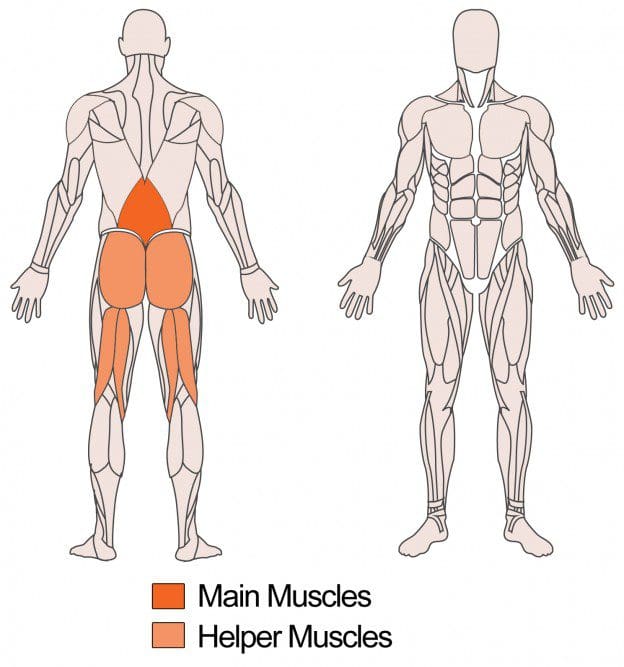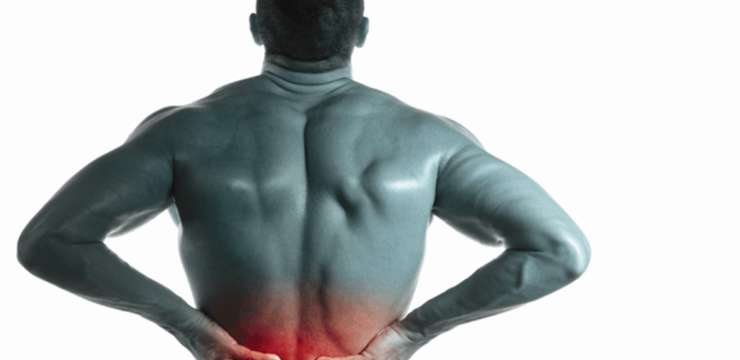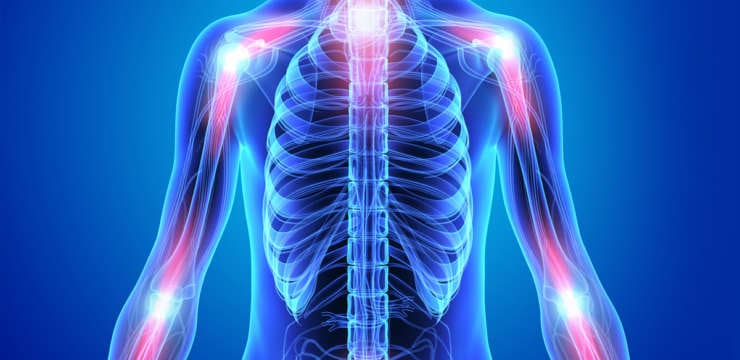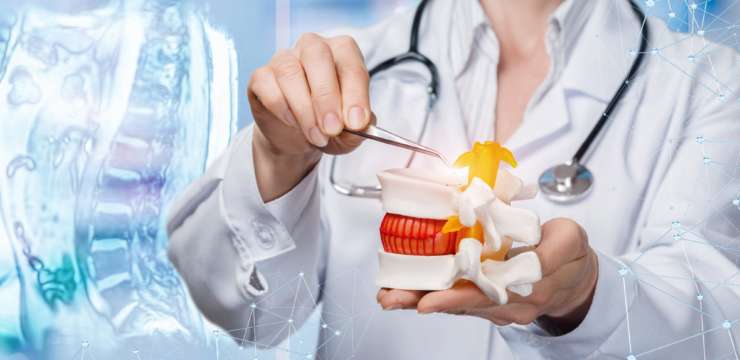
Table of Contents
Introduction
The body is an amazingly complex machine as it allows the individual to move each section, like the back, arms, legs, torso, neck, and head, without feeling any pain. Each section has various muscles, ligaments, and tissues that surround the skeletal joint and allow mobility, stability, and range of motion when the host is active. However, when underlying conditions start to affect the body, each section can be affected and cause pain-like symptoms associated with the muscles, ligaments, and tissues. Sometimes it can even cause referred pain in the vital organs, leading to more problems when not treated immediately. To that point, various exercises combined with therapy can help prevent pain-like symptoms from affecting the body and restore mobility to the upper and lower portions. This 2-part series will look at an exercise called hyperextension, which can help strengthen these muscles in the upper and lower portions. Part 1 will examine how hyperextension affects the body and how it is associated with low back pain. Part 2 will look at the various hyperextension exercises that can help strengthen each muscle group. We refer our patients to certified medical providers that provide available therapy treatments for individuals suffering from chronic pain-like conditions associated with low back pain. We encourage each patient when it is appropriate by referring them to associated medical providers based on their diagnosis or needs. We understand and accept that education is a marvelous way when asking our providers’ crucial questions at the patient’s request and acknowledgment. Dr. Jimenez, D.C., makes use of this information as an educational service. Disclaimer
What Is Hyperextension?
Have you been experiencing pain-like symptoms in different areas of your body? Does it hurt when twisting and turning? Or do you constantly ache when bending over? Many of these symptoms are associated with muscle and joint pain that can affect the body and lead to hyperextension. Hyperextension is when a skeletal joint has a greater range of motion without feeling pain.
When a person suffers from a traumatic injury or has a chronic condition, it can cause the various muscles in the body to extend their range of motion and cause more pain that can affect their quality of life. A perfect example would be a person who is double-jointed in their hands, knee, elbows, and back. Even though many double-jointed people can further extend their joints, it can lead to various issues that can impact the body and lead to pain-like symptoms. For example, studies reveal that if a person has been in an auto accident and suffers from whiplash, the hyper-extended muscles can cause pain-like symptoms in the soft tissues, leading to neck pain. When this happens, it can cause symptoms of limited mobility and affect the individual.

Now if it is chronic conditions like EDS (Ehlers-Danlos syndrome) or chronic back conditions, it can affect the lower extremity muscles while affecting the mobility and stability of the body. Studies reveal that low back pain associated with hyperextension is developed when various factors can cause the spine to be in subluxation and compress the different vertebrate discs, muscles, ligaments, and tissues, which can cause pain over time. Additional studies have also found that when there are injuries in the thoracolumbar and lumbar spine, it is often combined with various forces that can cause mobility issues which leads to spinal subluxation and spinal compression.
An Overview Of Hyperextension

Biomedical physiologist Alex Jimenez will be explaining a specific exercise called Hyperextensions. Hyperextensions are an exercise that is designed to strengthen the erectors of the spine. They usually involve an extension type of maneuver for the concentric portion and AF flexion for the eccentric portion. Hyperextension relies on a pivot point, usually at the hips, which stresses the lower back muscles. It also allows you to work on the lower back muscles, which we said, the glutes, hamstrings, and even the mid back, depending on the arc of the movement. So why are hyperextensions important? They strengthen the lower back muscles, also known as the spinal rectors, and are responsible for stabilizing the spine. It can help decrease the chances of lower back pain or injuries, and it also helps strengthen your deadlift and squats. And it does this by allowing you to have better stabilization throughout these dynamic movements. So what muscles are involved? Numerous muscles are involved in the upper and lower body extremities, allowing hyperextension exercises to provide more range of motion without pain. The next part will show different variations of hyperextension exercises that can help each muscle.
Hyperextension Associated With Low Back Pain

Spinal subluxation often leads to low back pain and can affect a person’s ability to move. So how is hyperextension associated with low back pain? Some factors leading to low back pain, like incorrect posture or excessive lifting of heavy objects, can affect the low back muscles. The low back muscles support the low back, stabilize the spine, and help maintain good posture. When these muscles have been overused, it can lead to various injuries. All is not lost, as studies reveal that hyperextension exercises for low back pain, when done slowly, can provide isometric endurance improvement to the back muscles and allow flexibility back to the spine. Hyperextension exercises can strengthen the lower back muscles and reduce pain. However, exercise combined with chiropractic care can enable the body to restore itself and reduce the pain-like symptoms associated with spinal subluxation to allow the range of motion back in the muscles.
Conclusion
Hyperextension in the body allows the various muscle groups to extend their full range of motion. When multiple factors or chronic conditions begin to affect the different muscles in the body, it can lead to pain-like symptoms associated with the upper and lower extremities. Fortunately, the combination of exercises and chiropractic care can restore the body and the muscles to relax. In part 2 of this series, we will look at the various hyperextension exercises for low back pain and how they can help increase the body’s range of motion.
References
Johnson, G. “Hyperextension Soft Tissue Injuries of the Cervical Spine–a Review.” Journal of Accident & Emergency Medicine, U.S. National Library of Medicine, Jan. 1996, www.ncbi.nlm.nih.gov/pmc/articles/PMC1342595/.
MACNAB, I. “Low Back Pain. the Hyperextension Syndrome.” Canadian Medical Association Journal, U.S. National Library of Medicine, 15 Sept. 1955, www.ncbi.nlm.nih.gov/pmc/articles/PMC1826142/.
Manniche, C, et al. “Intensive Dynamic Back Exercises with or without Hyperextension in Chronic Back Pain after Surgery for Lumbar Disc Protrusion. A Clinical Trial.” Spine, U.S. National Library of Medicine, Apr. 1993, pubmed.ncbi.nlm.nih.gov/8484146/.
Oh, In-Soo, et al. “Pure Hyperextension Injury of the Lower Lumbar Spine with an Ureteral Impingement.” European Spine Journal : Official Publication of the European Spine Society, the European Spinal Deformity Society, and the European Section of the Cervical Spine Research Society, U.S. National Library of Medicine, May 2013, www.ncbi.nlm.nih.gov/pmc/articles/PMC3641240/.
Disclaimer
Disclaimers
Professional Scope of Practice *
The information herein on "An Overview Of Hyperextension On The Body (Part 1)" is not intended to replace a one-on-one relationship with a qualified health care professional or licensed physician and is not medical advice. We encourage you to make healthcare decisions based on your research and partnership with a qualified healthcare professional.
Blog Information & Scope Discussions
Welcome to El Paso's wellness blog, where Dr. Alex Jimenez, DC, FNP-C, a board-certified Family Practice Nurse Practitioner (FNP-C) and Chiropractor (DC), presents insights on how our team is dedicated to holistic healing and personalized care. Our practice aligns with evidence-based treatment protocols inspired by integrative medicine principles, similar to those found on dralexjimenez.com, focusing on restoring health naturally for patients of all ages.
Our areas of chiropractic practice include Wellness & Nutrition, Chronic Pain, Personal Injury, Auto Accident Care, Work Injuries, Back Injury, Low Back Pain, Neck Pain, Migraine Headaches, Sports Injuries, Severe Sciatica, Scoliosis, Complex Herniated Discs, Fibromyalgia, Chronic Pain, Complex Injuries, Stress Management, Functional Medicine Treatments, and in-scope care protocols.
Our information scope is limited to chiropractic, musculoskeletal, physical medicine, wellness, contributing etiological viscerosomatic disturbances within clinical presentations, associated somato-visceral reflex clinical dynamics, subluxation complexes, sensitive health issues, and functional medicine articles, topics, and discussions.
We provide and present clinical collaboration with specialists from various disciplines. Each specialist is governed by their professional scope of practice and their jurisdiction of licensure. We use functional health & wellness protocols to treat and support care for the injuries or disorders of the musculoskeletal system.
Our videos, posts, topics, subjects, and insights cover clinical matters, issues, and topics that relate to and directly or indirectly support our clinical scope of practice.*
Our office has reasonably attempted to provide supportive citations and has identified the relevant research studies or studies supporting our posts. We provide copies of supporting research studies available to regulatory boards and the public upon request.
We understand that we cover matters that require an additional explanation of how they may assist in a particular care plan or treatment protocol; therefore, to discuss the subject matter above further, please feel free to ask Dr. Alex Jimenez, DC, APRN, FNP-BC, or contact us at 915-850-0900.
We are here to help you and your family.
Blessings
Dr. Alex Jimenez DC, MSACP, APRN, FNP-BC*, CCST, IFMCP, CFMP, ATN
email: coach@elpasofunctionalmedicine.com
Licensed as a Doctor of Chiropractic (DC) in Texas & New Mexico*
Texas DC License # TX5807
New Mexico DC License # NM-DC2182
Licensed as a Registered Nurse (RN*) in Texas & Multistate
Texas RN License # 1191402
ANCC FNP-BC: Board Certified Nurse Practitioner*
Compact Status: Multi-State License: Authorized to Practice in 40 States*
Graduate with Honors: ICHS: MSN-FNP (Family Nurse Practitioner Program)
Degree Granted. Master's in Family Practice MSN Diploma (Cum Laude)
Dr. Alex Jimenez, DC, APRN, FNP-BC*, CFMP, IFMCP, ATN, CCST
My Digital Business Card






